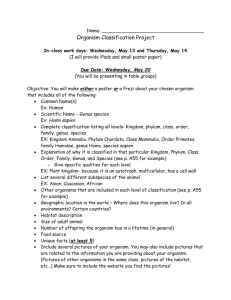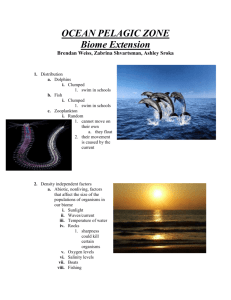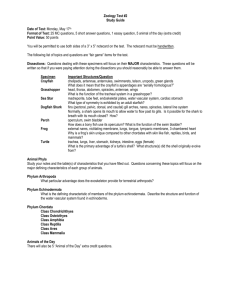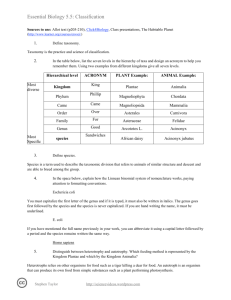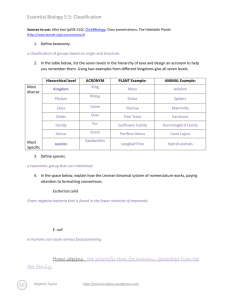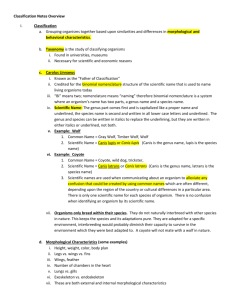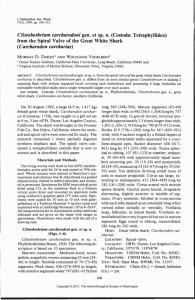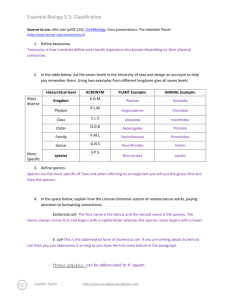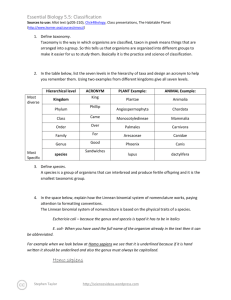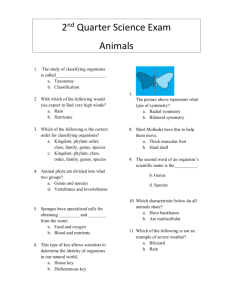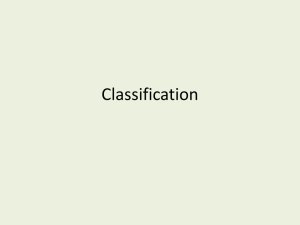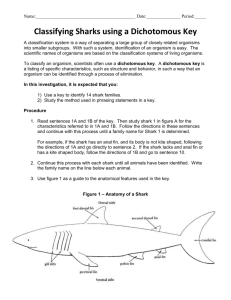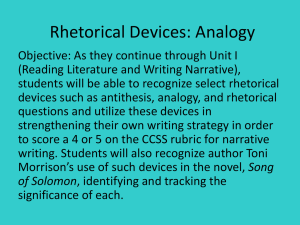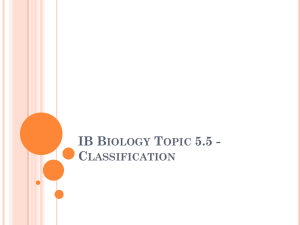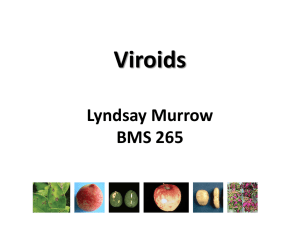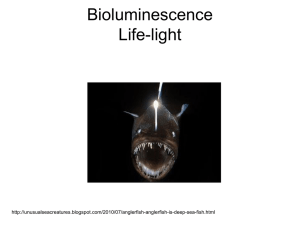classification analogy
advertisement
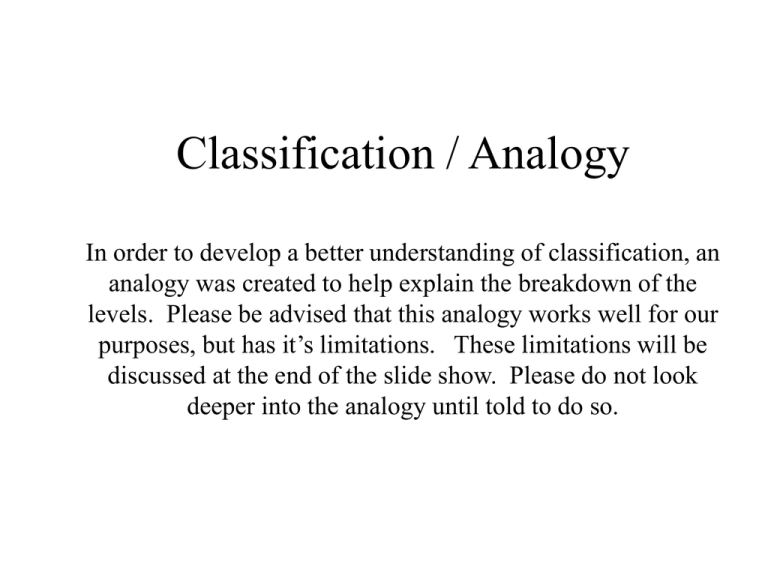
Classification / Analogy In order to develop a better understanding of classification, an analogy was created to help explain the breakdown of the levels. Please be advised that this analogy works well for our purposes, but has it’s limitations. These limitations will be discussed at the end of the slide show. Please do not look deeper into the analogy until told to do so. The 7 levels of classification are as follows: Kingdom Phylum Class Order Family Genus species How the analogy works: • • • • • • • Kingdom Phylum Class Order Family Genus species - planet continent country state (providence) city neighborhood house The levels of classification work as one moves up from the most specific to the least specific. That is to say that the very most specific species (location) is found in the species (house) level. How to scientifically write the name of an organism? • In order to appropriately write the name of an organism, scientists use what is known as scientific nomenclature. • The name of organism is written with it’s Genus and species. • Example: Carcharodon carcharias refers to the great white shark. • Notice these key points of scientific nomenclature: – – – – words are in the Latin language (the root of all languages) Genus is capitalized species is not capitalized both words are italized Why do we use scientific nomenclature? • The common names we use today are too general and vague to pin-point one specific organism. – Example: The term “shark” could mean any number of sharks in the ocean. A white shark could be a Great White or a Mako shark, depending on where in the world the name is used. Only the term Carcharodon carcharias absolutely refers to a very specific species of shark.
